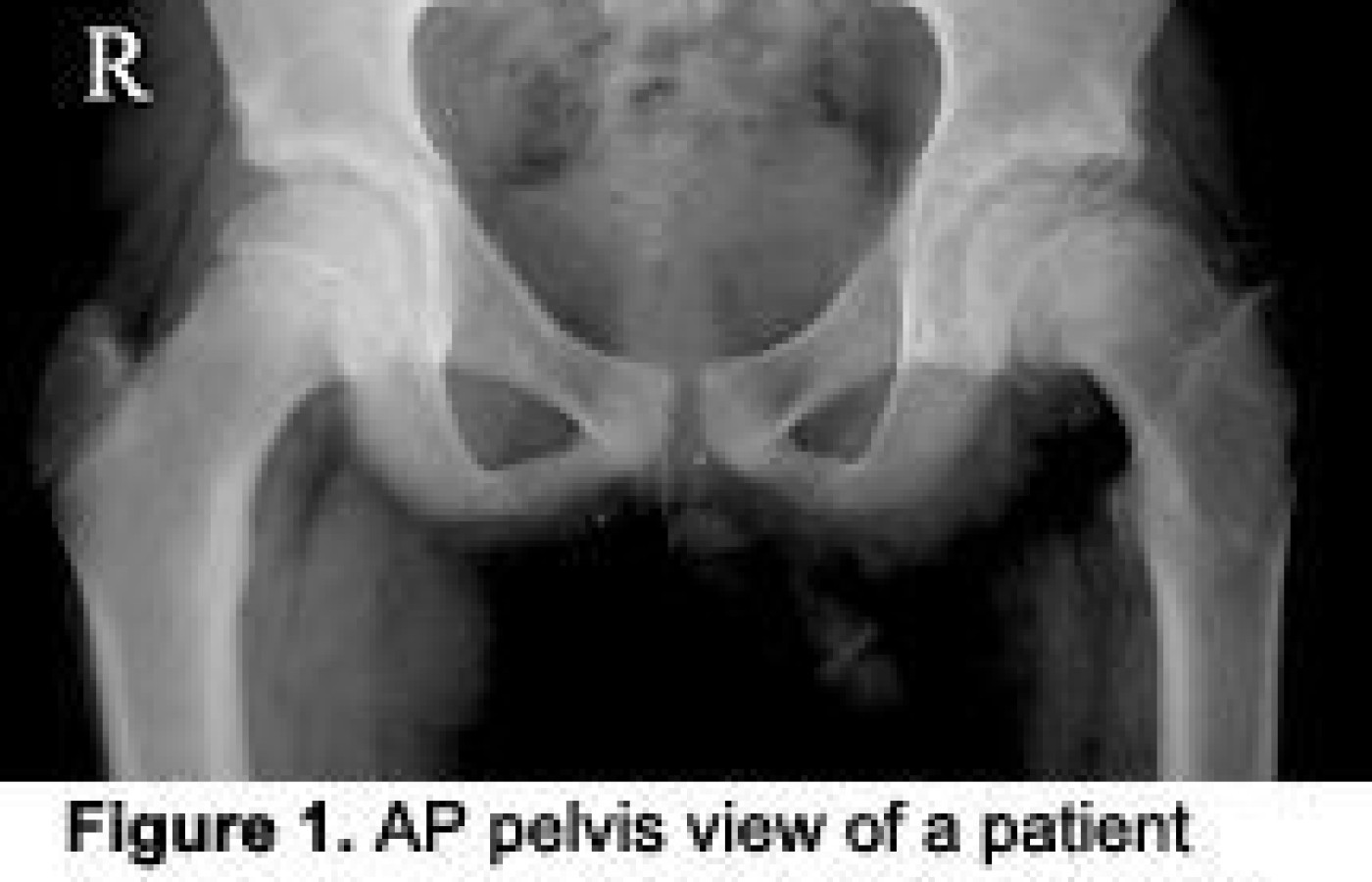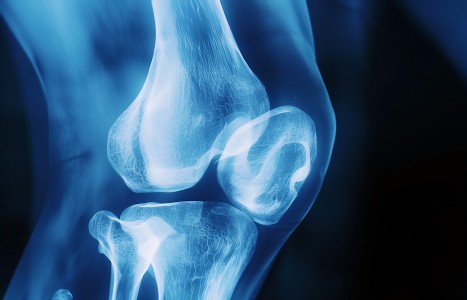While there may be no “magic bullet” when it comes to health, this should not dissuade patients or practitioners from seeking out ingredients that offer multiple health benefits. When it comes to dietary supplements, there are thousands upon thousands of choices. So, why not choose one that can address pain and assist with mental health? A supplement that can address inflammation, while also preventing certain types of cancer.
| Digital ExclusiveSlipped Capital Femoral Epiphysis
When children or adolescents present to the chiropractic office with pain at the hip, thigh or knee, there are only a handful of common conditions to consider. More specifically, if there is a painful limp originating at the hip, the list of conditions trickles down to even fewer. The main conditions to consider would be developmental hip dysplasia, Legg-Calvé-Perthes disease and slipped capital femoral epiphysis (SCFE).1 This discussion will focus on SCFE.
Etiology
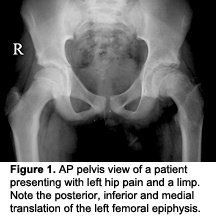
Patient Presentation
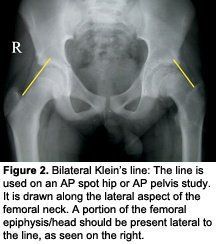
The patient can present with or without a limp, but generally there will be significant pain if they can walk. Some will present with extreme pain that prevents them from walking at all. The hip and groin is the most frequent region of pain; however, the thigh and knee can be common areas of referral.1,3,4
Radiographic Findings

Treatment
Early diagnosis is the key to avoiding both short- and long-term complications. Short-term complications consist of avascular necrosis, chondrolysis and the need for a more complicated surgical procedure.1,3,5 Long-term complications include the following: severe varus deformity, leg shortening, reduced range of motion, degenerative joint disease and pain.1,3,5
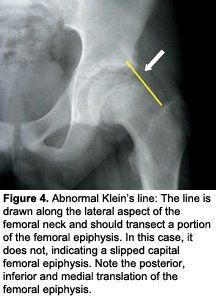
If an early diagnosis is made, immobilization and reduction of weight-bearing may have a successful outcome. However, if there is too much slippage, the treatment becomes surgery, ranging from single-screw fixation to urgent hip-joint aspiration, followed by closed reduction and single- or double-screw fixation.2
Conclusion
For the chiropractic physician, the key to making an early diagnosis is including a hip evaluation in all adolescent and child patients who present with knee, thigh or groin pain. Once radiographs have been acquired, Klein's line will confirm the presence of SCFE. Once the diagnosis has been established, an immediate orthopedic referral should be made.
References
- Randall L. Slipped capital femoral epiphysis. Am Fam Physician, 1998;1:57(9):2135-42, 2148-50.
- Aronsson D. Slipped capital femoral epiphysis: current concepts. J Am Acad Orthop Surg, Nov 2006;14(12):666-79.
- Resnick, D, Niwayama G. Diagnosis of Bone and Joint Disorders, 3rd ed. Philadelphia: WB Saunders, 1995.
- Yochum T, Rowe L. Essentials of Skeletal Radiology, 3rd ed. Baltimore: Williams & Wilkins, 2005.
- Kocher M, Bishop J, Weed B, et al. Delay in diagnosis of slipped capital femoral epiphysis. Pediatrics, April 2004;113(4):322-5.
